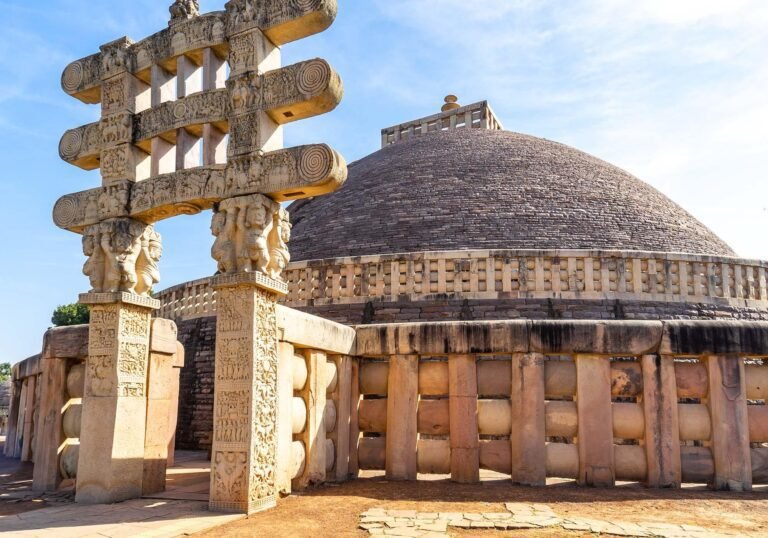Chapter 10 - Ancient India : Cultural
1. Answer in one sentence.
(1) Make a list of ancient Indian universities.
Ans: Takshashila, Varanasi, Nalanda, Valabhi, Kanchi, and Vikramshila, were few ancient Indian Universities.
(2) Make a list of the Indian goods that were in demand in foreign countries.
Ans: Indian goods such as fine textiles, ivory articles, precious stones, spices, and earthen pottery were in great demand in foreign countries.
2. Name the following.
Epics and poetic compositions of ancient India.
Ans: Ramayana, Mahabharata, Raghuvansha, Kumarsambhava, Kiratarjuniya, Shishupalvadh are some of well-known compositions of ancient India.
3. Fill in the blanks.
(1) The epic Ramayana was composed by rishi ………..
Ans: Valmiki
(2) The science of Indian medicine is called ……….
Ans: Ayurveda
(3) Thousands of students could live at the …………. university.
Ans: Nalanda
4. Answer in brief.
(1) Explain what is meant by ‘Tipitaka’.
Ans:
(i) The word pitaka means a basket or collections. Here, it means a section.
(ii) Tipitika has three pitaka’s or parts. These are;
(a) Vinay pitaka – It prescribes the rules for regulating the Bhuddhist sanghas.
(b) Sutta pitaka – These are the common teachings of Buddha.
(c) Abhidhamma pitaka – It is the systematic analysis of Buddhist doctrines.
(2) What is the the message of the Bhagvad Gita?
Ans:
(i) The Bhagvad Gita teaches us that each one of us should carry out one is duties without expecting material grains.
(ii) It also tells us that bhakti on devotion is the way to salvation and its open to all.
(3) What aspects does Ayurveda take into account ?
Ans:
(i) Ayurveda is the ancient Indian science of medicine.
(ii) It gives detailed symptoms of diseases.
(iii) It gives information about clinical diagnosis and pharmacy (medicines).
(4) What is meant by Sangham Literature?
Ans:
(i) ‘Sangham’ means a gathering of learned men. The literature compiled in such gatherings is known as ‘Sangham Literature’.
(ii) It is the most ancient literature in Tamil. ‘Silappadhikaram’ and ‘Manimekhalai’ are two of its well-known epics.
(iii) From Sangham literature, we learn about the political and social life in South India during the period.
5. Discuss.
Art and architecture of the Maurya and Gupta period.
Ans:
(i) Indian architecture reached its peak during the Maurya and the Gupta periods.
(ii) The stone pillars erected by Emperor Ashoka at various places are excellent examples of Indian sculpture.
(iii) The stupa at Sanchi and cave sculptures at Udayagiri, Khandagiri, Karla, Nashik, Ajanta, Ellora, etc. show that the same tradition advanced even further.
6. What would you do ?
(1) How would you obtain information about Ayurvedic medicine and use it in your day to day life ?
Ans: Ayurveda is an ancient medical science and has been practised for a long time. Elders from every household must be aware of it; hence, I’ll ask my grandparents and parents to give me some knowledge about it. Also, I’ll make use of the internet and ayurvedic books to collect information from there. Ayurveda primarily focuses on being natural and simple by following good habits, like waking up early in the morning, having good food habits, keeping oneself away from habits that are bad for the body and also the mind, having the right thinking, and knowing the usage of herbs. Positivity, soul-calming activities, and love for oneself and others are all beneficial; hence, I’ll try to adapt and continue to do these in my day-to-day life.
(2) On a trip to a historical site, your friend is writing his name on the structure.
Ans: On a historic site, if my friend writes his name or scribbles on the walls, I’ll tell him that it is our duty not to damage them by scribbling, spitting, or throwing waste around them. Historical structures are a part of our heritage and the beauty of India, which is admired by many foreign countries. Hence, by explaining the importance of these places, I’ll stop him from doing such a thing and tell him to explain to others, if he sees anyone else doing the same.
7. Observe the picture of the stupa at Sanchi and obtain more information about it.

